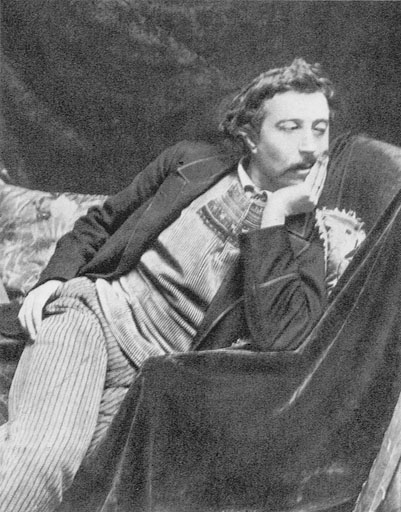
Born: 7 June 1848, Paris
Died: 8 May 1903 (aged 54)
Period: Post-Impressionism
The Life of Paul Gauguin
Paul Gauguin was a French post-Impressionist artist renowned for his bold use of color, experimental approach to form, and cultural exploration, which significantly influenced the development of modern art. Gauguin’s work is characterized by its rejection of the materialistic society of contemporary Europe and its pursuit of a purer form of expression, often found in exotic locales and primitive art forms. His life was as colorful and complex as his art, marked by travels, financial struggles, and a constant search for authenticity in his work and life.
Early Life and Career Born in Paris, Gauguin spent part of his childhood in Peru, an experience that later influenced his attraction to exotic motifs and cultures. Initially pursuing a career in the merchant marine and then as a stockbroker, Gauguin began painting in his spare time. By 1883, disillusioned with the capitalist society and his bourgeois existence, he decided to dedicate himself entirely to painting, leaving his job and eventually, his family, to pursue his art.
Artistic Development Gauguin’s early work was in the Impressionist style, but he soon began to develop his own distinctive approach. He sought to escape European civilization and its artistic conventions, leading him to Brittany, where he was inspired by the rural simplicity and the stark, bold outlines seen in folk art. This period marked a departure toward a more symbolic, abstract style with an intensified use of color.
In 1888, Gauguin had a brief and tumultuous stay in Arles with Vincent van Gogh, a pivotal moment for both artists that ended dramatically with van Gogh’s ear-cutting incident. Despite the strife, this period was incredibly productive for Gauguin, leading to works that showcased his evolving style.
Tahiti and Final Years Seeking further isolation and inspiration, Gauguin traveled to Tahiti in 1891, hoping to find an untouched paradise where he could create a new, purer form of art. Instead, he found a colonized island that fell short of his idyllic expectations. Nevertheless, Tahiti became the backdrop for some of his most famous works, in which he depicted lush landscapes, native life, and spiritual themes with a vibrant palette and simplified forms.
Gauguin’s time in the South Pacific was marked by personal and financial difficulties, but it also resulted in some of his most celebrated pieces, such as “Where Do We Come From? What Are We? Where Are We Going?” Despite his poor health and financial state, Gauguin continued to paint, moving to the Marquesas Islands in 1901, where he died in 1903.
Legacy Paul Gauguin’s legacy is one of artistic innovation and the relentless pursuit of an aesthetic and spiritual ideal that broke away from traditional European painting. His work laid foundational stones for the Primitivism movement and influenced the avant-garde movements of the early 20th century, including Fauvism and Expressionism. Gauguin’s life and art remain a testament to the artist’s quest for authenticity, exploring themes of identity, spirituality, and the intrinsic purity of exotic cultures.
Paul Gauguin’s Notable Works
Paul Gauguin, a leading figure of the Post-Impressionist movement, is renowned for his vibrant use of color and incorporation of Symbolist and Primitivist themes into his art. His quest for purity in art led him to remote locales, where he developed a distinctive style that has made a lasting impact on modern art. Here are ten of Gauguin’s most famous works that encapsulate his artistic journey:
- “Where Do We Come From? What Are We? Where Are We Going?” (1897-1898) – This large canvas, created in Tahiti, is Gauguin’s magnum opus, exploring themes of life, death, and meaning through a complex, symbolic composition.
- “Vision After the Sermon” (1888) – Painted during his time in Brittany, this work shows Breton women envisioning Jacob wrestling with the angel, showcasing Gauguin’s interest in spirituality and symbolism.
- “The Yellow Christ” (1889) – Another example of Gauguin’s Synthetist style from his Brittany period, this painting blends religious symbolism with the vivid landscapes of the region.
- “Tahitian Women on the Beach” (1891) – One of his first Tahitian canvases, it reflects his initial impressions of the island and its inhabitants, marked by a bold use of color and simplified forms.
- “Spirit of the Dead Watching” (1892) – This haunting scene depicts a young Tahitian girl lying on her bed with the ghostly presence of her ancestors watching over her, highlighting Gauguin’s fascination with the supernatural and the exotic.
- “Arearea” (1892) – Also known as “Joyousness,” this painting is a celebration of Tahitian life and culture, characterized by vibrant colors and relaxed compositions.
- “Nevermore” (1897) – A somber, enigmatic work showing a reclining Tahitian woman with a raven nearby, possibly inspired by Edgar Allan Poe’s poem “The Raven,” and reflecting Gauguin’s own feelings of loneliness and alienation.
- “The Siesta” (1894) – Illustrating Gauguin’s synthesis of figure and environment, this painting depicts Tahitian women in a moment of rest, employing a flat perspective and decorative patterns.
- “Te aa no areois” (The Seed of the Areoi, 1892) – This work is emblematic of Gauguin’s deep dive into the myths and customs of Tahiti, with a focus on the ancient Areoi society and its creation stories.
- “Two Tahitian Women” (1899) – Held in the Metropolitan Museum of Art, this painting portrays two women with flowers, encapsulating Gauguin’s idealized and sensual portrayal of Tahitian subjects.
Gauguin’s works are celebrated for their innovative approach to composition, color, and subject matter, leaving a profound impact on the trajectory of 20th-century art. Through his paintings, Gauguin sought to escape the confines of European society and explore deeper universal truths, leaving behind a legacy that continues to fascinate and inspire.